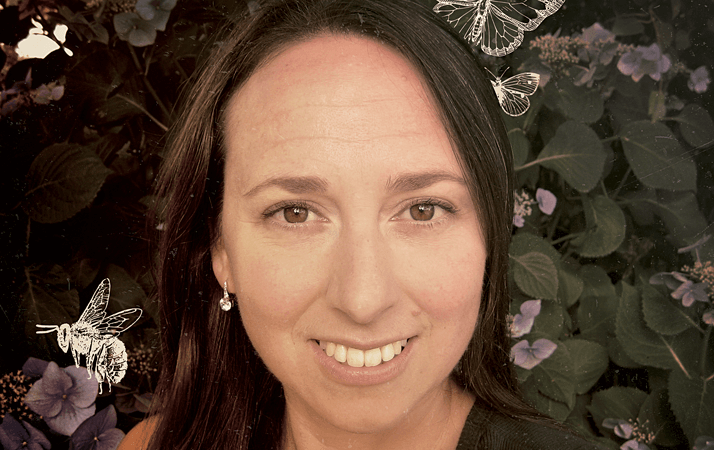
How did you get into analytical chemistry? I’m actually an engineer by training and not a chemist or life scientist, which I guess is a little unusual in the world of analytical chemistry, though becoming increasingly common as the field of bioengineering matures. After all, there is a large overlap between the two disciplines; engineers are interested in understanding problems and then applying fundamental approaches – in physics, chemistry and biology – to solve them. And it just so happens I’m intrigued by measurements – a lot of analytical chemists are also intrigued by measurements! Why engineering? I grew up in Florida – about 40 miles south of Kennedy Space Center – so I’ve seen tens, if not hundreds, of space shuttle and rocket launches from my front yard. Given the links to NASA, our middle and high schools had exceptional ‘science research’ programs. This enriching environment sparked my life-long interest in science, technology, math and engineering.
But you didn’t end up a rocket scientist...
I chose Caltech because it’s one of the homes of aeronautical engineering, but I was given some great advice that widened my focus; I ended up going to Stanford where I discovered that my understanding of materials and mass transport could be useful in devising new measurement approaches. From there, the biggest measurement challenges came to light; bioscience and biomedicine have particularly ambiguous and important unanswered questions. It’s a field where measurement scientists can make a
big difference.
And what are the biggest challenges?
One area that has gained a lot of attention from bioengineers, chemists, and others is diagnostics; I’ve been thrilled and humbled by the progress of others. The NIH has now recognized the importance of bringing engineers and analytical scientists into that area – and the impact of the Gates Foundation cannot be overstated. The shift of focus has legitimized these tough global questions as being valuable academic and educational pursuits for engineering. As an educator, it’s important for me to see students understand that contemplating and tackling these questions is not out of their reach – even at the start of their careers.
What’s driving your research right now?
I’m most interested in the layer below diagnostic devices – on the validation of promising biomarkers. The nucleic acid space is really moving forward, thanks in large part to the Human Genome Project and the resultant technology. But in the equally important (if not more so) protein measurement space, we’ve
been struggling.
What is your approach to the problem?
Paralleling the ‘scientific method’, engineers are trained to use an ‘engineering design process’ – a formal practice that enables us to break down the messy, ambiguous world around us into tractable questions. I’m really passionate about making measurements of potential protein biomarkers that i) make sense because they dynamically reflect what’s happening in a disease process through protein signaling, and ii) may be inaccessible to current, macro-scale tools. For us, that means creating high-specificity measurements at the single-cell and small sample volume level. Here, an engineer’s view of transport, materials, and quantitation, coupled with a focus on good design really helps.
How do you measure your own success?
When I was younger, I gravitated to long-distance running rather than sprinting. I recognized that if I put the effort in, over time I could really improve – and I did. Being involved in the diagnostics space is my way of trying to change the world. But – like my running – I know I’ve got to be in it for the long haul. Our focus for the foreseeable future will be on developing quantitative, precision tools suitable for many thousands of individual samples – at the bench – to help fill in significant gaps in biomolecular measurements, with an applied view to solving unmet needs.
How does it feel mixing with ‘traditional’ analytical chemists? One reason I love to go to forums like the HPLC conference is to learn – not just the solutions to problems but also what the important metrics of performance are (how success is measured) and how it fits in the bigger picture. It makes sense for analytical chemists and engineers to collaborate with each other – and not just to tackle other people’s problems. The analytical chemists (and other engineers) I’ve met are welcoming, curious and motivated to keep advancing. It’s a great community. Tell us about your induction into the Georges Guiochon Faculty Fellowship... It was a complete shock and a true honor – and quite humbling. The Fellowship was put in place as a memorial to both Georges’ monumental (and, for me, overwhelming) contributions and his passion for bringing ‘new blood’ into the field. I certainly hope to carry the torch in terms of reaching out to others and welcoming them into this vigorous, technical community. It was an honor to be presented with the award by Lois Ann Beaver (Georges’ widow), who I had the great pleasure of speaking with at length about his work and motivations – that was a sparkling highlight of the experience for me. In researching more about Georges, I was inspired to learn that he too was a bone fide engineer.




